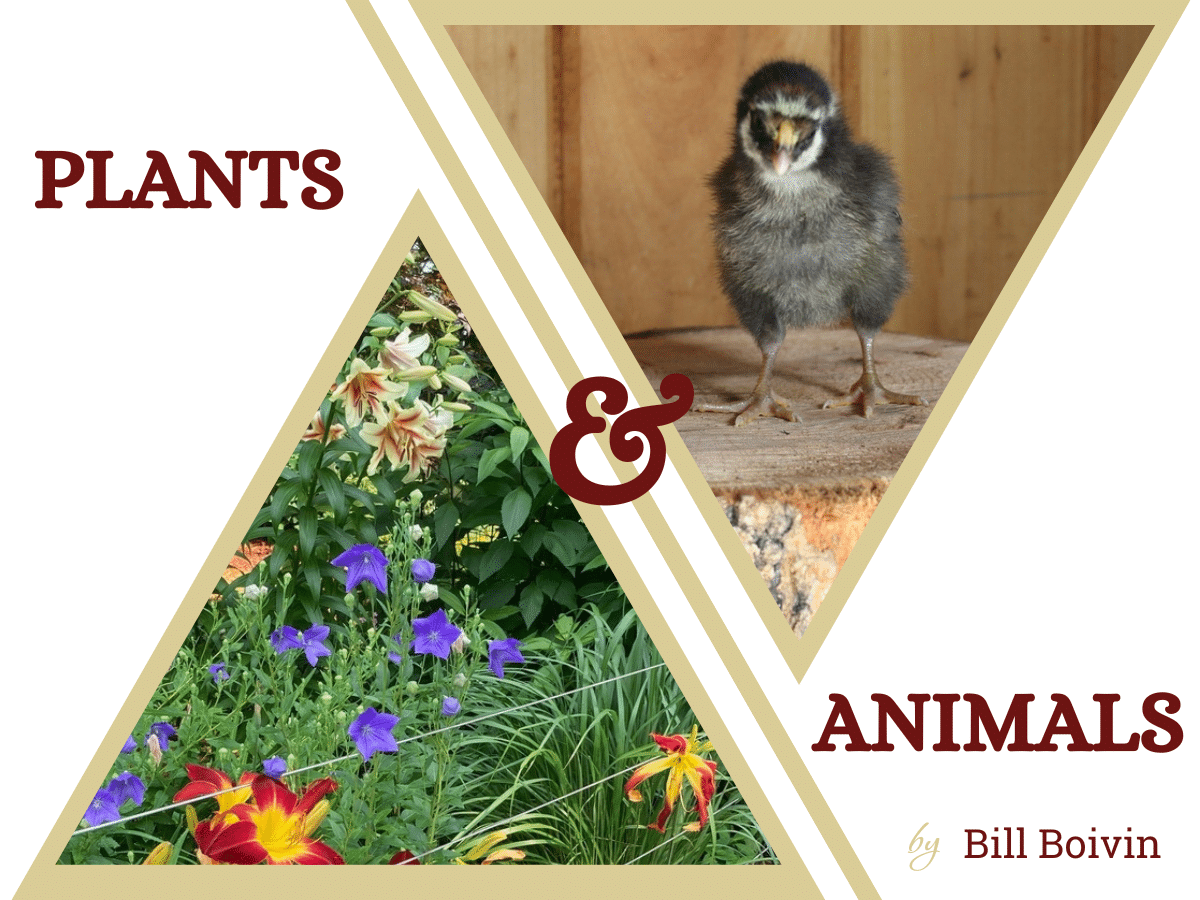Hunters Among Us: Backyard Predation in Burlington
There are some remarkable displays of predation up and down the food chain. Today, Columnist Bill Boivin shares two you've probably never heard of.


There is a saying that I love:
Dogs have fleas and cats have fleas that live on their skin and bite ‘em.
Those fleas have fleas, and those fleas have fleas and so on ad infinitum.
-Unknown
Everything has a predator. Even at the top of the food chain, when they get old enough or slow enough, somebody will eat them. Things can get interesting at the bottom of the food chain as well. The tiniest insects can have even tinier insects that prey on or in them.
As I mentioned in a previous column, our dog Iris was the apex predator in our yard. But, Iris’s killer instincts aside, natural predation takes place everywhere. On my modest half-acre of land, I’ve watched a Cooper's Hawk kill and eat a blue jay, seen foxes carrying away bunnies, had red-tailed hawks kill two of my chickens, watched an ermine hunt for mice in my woodpile, and many other examples.
But my favorite predation story involves a different kind of predator.
One day while I was doing some yard work near my wood pile, on a tree nearby I encountered what I thought was the largest yellow jacket I had ever seen. It was three times the size of any I had seen before! This was before internet apps to ID bugs, so I relied on my trusty, well-worn insect field guide. According to the guide, the insect wasn’t a yellow jacket at all! It was a pigeon horntail (Tremex columba). That was a new one for me, so I learned about it.


The first thing I realized was I had not been observant enough. Yellow jackets are wasps. Most wasps have a segmented body – an abdomen and a thorax separated by an obvious thin waist. The horntail, although still a wasp, had no such visible thin waist. It looks completely different. Horntails are non-stinging wasps. That thing in the back that looks like a stinger? It’s an ovipositor, a tube used for laying eggs. Which meant this was a female horntail. Females are quite a bit bigger than males, hence the very large size.
She was poking around looking for the perfect spot to lay her eggs under the bark of the tree. Simple, right? Not so fast. Not only does the female horntail drill a hole in the bark and insert 2 to 7 eggs, but she also collects and inserts white rot fungus. As the fungus grows, it weakens the underside of the bark so when her eggs hatch into larvae, they can eat the bark underside and have space to move around. The larvae live under the bark for a full year before pupating into adults and boring their way out. That in itself is a remarkable story. However, here is where it gets really interesting.
Later that summer, while hand watering in the rear of my yard, I observed a very cool wasp on the same tree. Again, I resorted to my field guide to find that it was a Giant Ichneumon wasp (Megarhyssa sp.). What a beautiful and graceful beast! It is very thin and sleek with a segmented body and a hugely long ovipositor, much longer than the length of its entire body. The one I observed had its ovipositor arched up over its body, penetrating the bark in front of its own face! A female Ichneumon walks around on a tree–Get this!–listening for the presence of pigeon horntail larvae! When she hears one, she drills a hole into the bark, penetrating the tunnel of the horntail larva. She then lays an egg and stings the horntail larva, paralyzing it so her larva can have fresh food when it hatches. The horntail larva is consumed in about two weeks. Then the Ichneumon baby lies dormant under the bark and emerges the next summer. Amazing!


I also regularly see Great Black Digger Wasps, a large iridescent black wasp (Sphex pensylvanicus). They have a similar method of predation. They will sting and paralyze an adult cricket or other insect, dig a hole and drag the cricket into it, then lay one egg on it and bury it. Again, when the egg hatches, the emerging larva has fresh food. Yum!
Wow! What a slow-motion dance of predator and prey, happening right on my own property. I find it no less thrilling than videos of big cats catching wildebeests in Africa.
My property is not abutting conservation land or any extensive forest area, it’s just a typical ½ acre Burlington lot. But I have trees, shrubs, and flowers of many different species, and a very small lawn. That diversity encourages other diversity, which makes for some very interesting observations.
It might feel, especially in the thick of the summer, that bugs are everywhere. However, these essential parts of our ecosystem are under threat. “According to a meta-analysis of 16 studies, insect populations have declined by about 45% in just the last 40 years. The large-scale death of insects poses huge threats not only to the ecosystems they exist in but also to much of our agriculture” (Spectrum News/Jeremy Lindenfeld 2023). So what can we do? Don’t spray but eliminate all standing water to reduce mosquito populations. Plant native plants that encourage other insect presence. Don’t rake all the leaves up every fall – many insects overwinter in leaf debris and dead hollow stems of plants. I don’t rake leaves until the spring in large parts of my yard. Some areas I never rake.
Study, protect, and enjoy the bugs in your yard. Wild Kingdom exists in our own surroundings – if only you’ve got the patience and curiosity to watch for it.
Bill Boivin is a scientist, retired from 30 years of active duty with the United States Public Health Service. He is a Burlington Town Meeting Member and Conservation Commissioner. He and his wife, Jane, grew up in Lynn and now live in Burlington with their 2 mini dachshunds, 7 chickens, and Maya, a ball python. Bill and Jane have shared a love of nature, gardening, and wildlife for over 50 years. They have fostered, healed, raised, and loved a remarkable variety of animals in their time together. Learn more about Bill.




